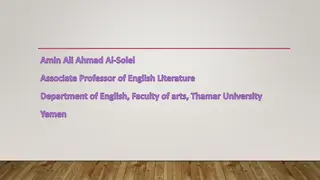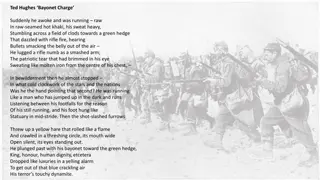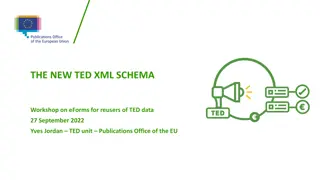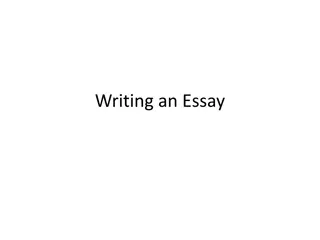Mastering Writing for Publication: Strategies and Toolkits
Enhance your writing skills with practical strategies and essential toolkits for publication. Learn how to select a research program, develop your writing style, and understand the writing process effectively. Dive into the world of writing with guidance from experts in the field.
Download Presentation

Please find below an Image/Link to download the presentation.
The content on the website is provided AS IS for your information and personal use only. It may not be sold, licensed, or shared on other websites without obtaining consent from the author. Download presentation by click this link. If you encounter any issues during the download, it is possible that the publisher has removed the file from their server.
E N D
Presentation Transcript
Writing for Publication KALEIDOSCOPE TED, 2016 Michael S. Rosenberg, PhD SUNY New Paltz
Advance Organizer I. Background: Developing a Writer s Toolkit II. What to Write: Selecting a Program of Research III.How to Write: General and Specific Strategies
Background: Having A Writers Toolkit FROM STEPHEN KING S ON WRITING: A MEMOIR OF THE CRAFT WHAT IS IN THE TOOLKIT? Read a lot Write a lot Recognize that Inspiration Comes From Everywhere .Yet Have a Space of Your Own Know the Conventions Fiction Non-Fiction
Background: Having A Writers Toolkit WHAT IS IN THE TOOLKIT? MORE Organized Thinking: From Your Head to the Heads of Others Provide Good Descriptions (Think cookbook) Facility for Revision: The Value of Other s Eyes Ideas Experiences Needs
Background: Understanding the Process TIPS FOR WRITING LESS BADLY ( MUNGER, 2010) Writing is An Exercise Set Goals Based on Output, Not Input Find a Voice; Don t Just Get Published Give Yourself Time Everyone s Unwritten Work Is Brilliant Pick a Puzzle (or a Logic Model or Graphic) Write First Squeeze the Other Things Not all thoughts are profound (and some of the most profound thoughts are wrong) Edit, Edit, and Edit some more
What to Write SELECTING A PROGRAM OF RESEARCH
How to Write GENERAL AND SPECIFIC WRITING STRATEGIES General Writing Strategies Writing Style Guidelines- From APA Integration and Synthesis Reviewing the Literature Common Errors in Technical Writing Developing the Logic for Your Proposal
How to Write: General Strategies Be Very Explicit Tell them what they are going to get Give it to them Tell them what they got Be An Active Rather Than A Passive Writer Direct the reader Know the point Relate aspects of the paper to the point
How to Write: General Strategies Be An Organized Writer Think of the logic of what you want to say (the so what principle) Think clearly and succinctly Know the major themes of what you want to say Use an advance organizer as your first paragraph
How to Write: General Strategies Use paragraphing correctly (Use a metacognitive self- check) Is the paragraph short? Does the first sentence of the paragraph convey the main point of the paragraph? Does each sentence relate to the main point? Does the sentence you just read relate to the previous sentence? Does the paragraph relate to the previous paragraph?
How to Write: General Strategies Know your title: It prompts your logic
How to Write: General Strategies Make Good Use of Your Time: Writing on the Run Articulate and rehearse what you want to say Outline the soundbites of your logic Brainstorm of use graphic organizers. Use verbal rehearsal in a user-friendly fashion. Develop each of your soundbites Transpose into APA format Ensure that you are using effective paragraphing Quit in the middle of a sentence
Writing Style Guidelines from APA Use the Precise Word Avoid ambiguous expressions Word Choice (Data is plural) Avoid colloquial expressions Remember you are writing a technical document Avoid Ambiguity by Using Referents Correctly Orderly Presentation of Ideas Advance organizers Logical transitions Use of headings to guide the reader
Writing Style Guidelines from APA Economy of Expression KISS principle Short, simple sentences Short paragraphs Consideration of Reader Criticism, Assistance, and Improvement The Fine Line Between Citation and Theft Use your own words Limit use of direct quotes Give credit to the concept
Integration and Synthesis Definition Outcome of Process Finding Common Threads Finding Important Differences Organizing Your Thoughts Application of Good Writing to Integration and Synthesis
Common Errors in Technical Writing Style Turn-Offs Grammatical Errors Not having sufficient substance Lack of coherence and clarity No clear theme
Developing the Logic for Your Proposal Use writing strategies to guide your logic Use the triangle as a prompt
Thanks and Good Writing For more information: rosenbem@newpaltz.edu























